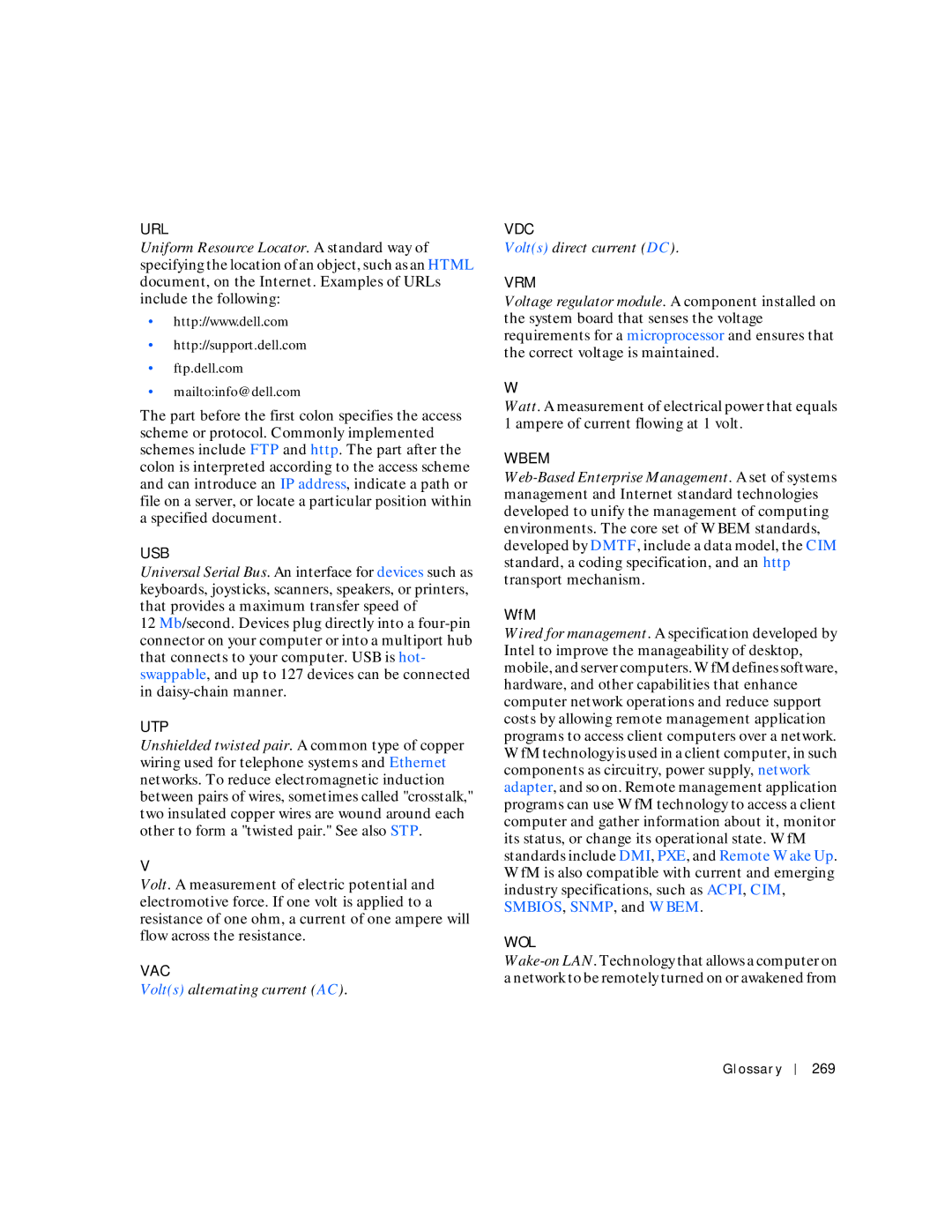URL
Uniform Resource Locator. A standard way of specifying the location of an object, such as an HTML document, on the Internet. Examples of URLs include the following:
•http://www.dell.com
•http://support.dell.com
•ftp.dell.com
•mailto:info@dell.com
The part before the first colon specifies the access scheme or protocol. Commonly implemented schemes include FTP and http. The part after the colon is interpreted according to the access scheme and can introduce an IP address, indicate a path or file on a server, or locate a particular position within a specified document.
USB
Universal Serial Bus. An interface for devices such as keyboards, joysticks, scanners, speakers, or printers, that provides a maximum transfer speed of
12Mb/second. Devices plug directly into a
UTP
Unshielded twisted pair. A common type of copper wiring used for telephone systems and Ethernet networks. To reduce electromagnetic induction between pairs of wires, sometimes called "crosstalk," two insulated copper wires are wound around each other to form a "twisted pair." See also STP.
V
Volt. A measurement of electric potential and electromotive force. If one volt is applied to a resistance of one ohm, a current of one ampere will flow across the resistance.
VAC
Volt(s) alternating current (AC).
VDC
Volt(s) direct current (DC).
VRM
Voltage regulator module. A component installed on the system board that senses the voltage requirements for a microprocessor and ensures that the correct voltage is maintained.
W
Watt. A measurement of electrical power that equals 1 ampere of current flowing at 1 volt.
WBEM
WfM
Wired for management. A specification developed by Intel to improve the manageability of desktop, mobile, and server computers. WfM defines software, hardware, and other capabilities that enhance computer network operations and reduce support costs by allowing remote management application programs to access client computers over a network. WfM technology is used in a client computer, in such components as circuitry, power supply, network adapter, and so on. Remote management application programs can use WfM technology to access a client computer and gather information about it, monitor its status, or change its operational state. WfM standards include DMI, PXE, and Remote Wake Up. WfM is also compatible with current and emerging industry specifications, such as ACPI, CIM, SMBIOS, SNMP, and WBEM.
WOL
Glossar y
269
